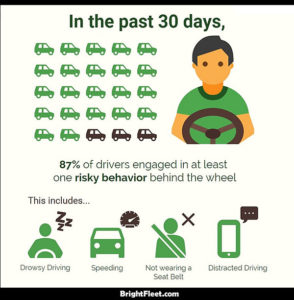Many people, including perhaps yourself, believe you can safely and accurately drive while texting. If that’s your belief, I need to share a few facts about distracted driving with you.
Written by Scott Marshall (@SafeDriver)
 We all have certain beliefs. Sometimes these beliefs get in the way of facts. This can certainly be said when it comes to distracted driving; namely texting and the ability to drive safely. Many people, including perhaps yourself, believe you can safely and accurately drive while texting. If that’s your belief, I need to share a few facts about distracted driving with you.
We all have certain beliefs. Sometimes these beliefs get in the way of facts. This can certainly be said when it comes to distracted driving; namely texting and the ability to drive safely. Many people, including perhaps yourself, believe you can safely and accurately drive while texting. If that’s your belief, I need to share a few facts about distracted driving with you.
The facts remain that you can essentially do no more than 1 thought-provoking task at a time. When it appears you’re doing more than 1 task at a time, it may be the result that all but 1 task are habits. You don’t need to think about habits since you’re doing them without thinking about them. The other illusion is instead of doing more than 1 task at a time, you’re actually doing what’s referred to as task switching. You’re quickly moving from one task to another very quickly, so it has the appearance you’re multi-tasking.
Driving is done with your brain. Your brain tells your eyes where to look. Your eyes send a message back to your brain when they recognize a problem and then your brain tells your hands or feet to get busy and do something to solve the problem. However, if your brain is not on the driving task – mainly because it’s involved with a text message – your brain can’t direct your eyes, hands or feet to help you drive safely.
Fact: It’s Not Just Texting While Driving (moving) That Is Dangerous
Texting while stopped at a red light can also be risky. If you’re looking down at your phone while stopped and you notice the traffic in the next lane begin to move, you may begin to also move thinking it’s time to go. This was caused because you were distracted. However, your light may still be red but the traffic next to you had an advanced green light. Now you’ve just gone through a red light, risking a crash and possible injury or death.
Despite the fact that most US states have a ban for texting while driving, we must take the responsibility upon ourselves as a driver to protect ourselves, our passengers and other road users. It’s a selfish act to feel you can take your mind off driving, even for a few seconds and not feel you’re risking lives.
Cell phones have been part of our society for over 30 years and texting for roughly 25 years, and the fact is that distracted driving has become a real problem. To the younger members of our society, they most likely can’t remember life without cell phones. Centennials, Millennials and perhaps even some of the Generation X members of our society have allowed cell phones to be part of their daily life. But where do we draw the line between staying in contact with what’s going on in the world and driving? Driving is your job when you’re behind the wheel. Once you reach your destination you are then in a position to communicate with those who have texted or emailed you.
Fact: Reaction Time Suffers when Distracted Driving
It takes the average driver 4.5 seconds to stop their vehicle, which is approximately half a football field. That’s while on dry pavement with emergency braking techniques. If the pavement is wet, it can take over 6 seconds to stop. Looking down and texting one sentence can take longer than those times. A minimum safe following distance in the city is 2 seconds while on dry roads. If you look down at your phone to read a text or to send a text at roughly 1 second after the driver ahead of you hits their brakes, you’ll crash into them at full speed; without applying your brakes at all.
With all of this information, I have a question; is that text really worth it?
Free Offer: April is Distracted Driving Awareness Month
April is #DistractedDrivingAwarenessMonth – and we are making our Avoiding Distracted Driving course available #FREE for new users – #DistractedDriving #RoadSafety

